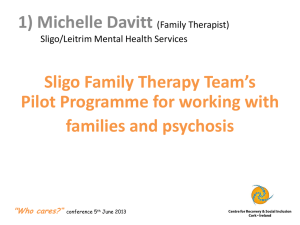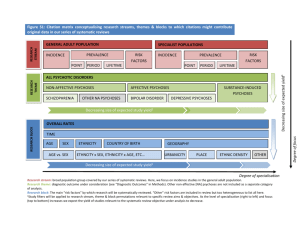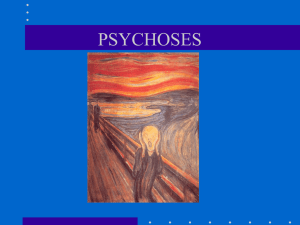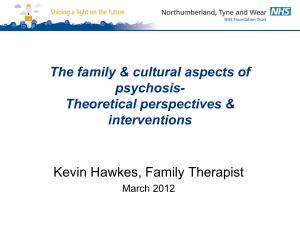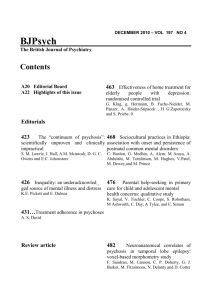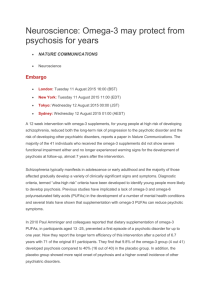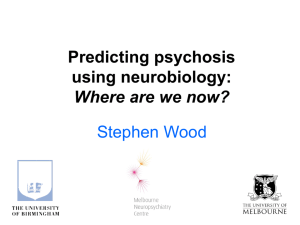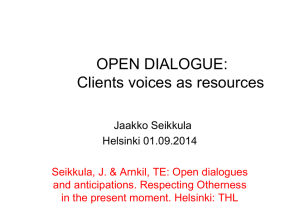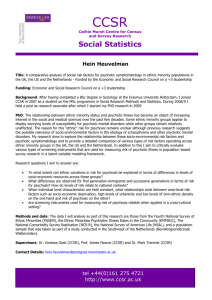Childhood Non-Affective Psychoses protocol card
advertisement
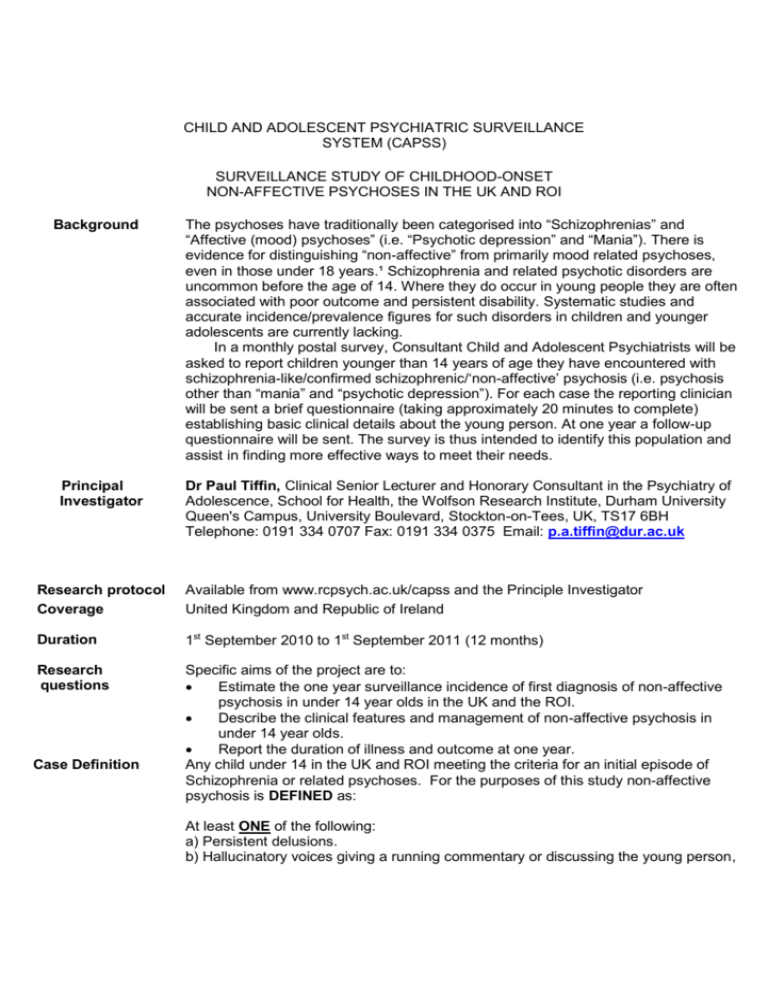
CHILD AND ADOLESCENT PSYCHIATRIC SURVEILLANCE SYSTEM (CAPSS) SURVEILLANCE STUDY OF CHILDHOOD-ONSET NON-AFFECTIVE PSYCHOSES IN THE UK AND ROI Background Principal XXXXInvestigator The psychoses have traditionally been categorised into “Schizophrenias” and “Affective (mood) psychoses” (i.e. “Psychotic depression” and “Mania”). There is evidence for distinguishing “non-affective” from primarily mood related psychoses, even in those under 18 years.¹ Schizophrenia and related psychotic disorders are uncommon before the age of 14. Where they do occur in young people they are often associated with poor outcome and persistent disability. Systematic studies and accurate incidence/prevalence figures for such disorders in children and younger adolescents are currently lacking. In a monthly postal survey, Consultant Child and Adolescent Psychiatrists will be asked to report children younger than 14 years of age they have encountered with schizophrenia-like/confirmed schizophrenic/‘non-affective’ psychosis (i.e. psychosis other than “mania” and “psychotic depression”). For each case the reporting clinician will be sent a brief questionnaire (taking approximately 20 minutes to complete) establishing basic clinical details about the young person. At one year a follow-up questionnaire will be sent. The survey is thus intended to identify this population and assist in finding more effective ways to meet their needs. Dr Paul Tiffin, Clinical Senior Lecturer and Honorary Consultant in the Psychiatry of Adolescence, School for Health, the Wolfson Research Institute, Durham University Queen's Campus, University Boulevard, Stockton-on-Tees, UK, TS17 6BH Telephone: 0191 334 0707 Fax: 0191 334 0375 Email: p.a.tiffin@dur.ac.uk Research protocol Coverage Available from www.rcpsych.ac.uk/capss and the Principle Investigator United Kingdom and Republic of Ireland Duration 1st September 2010 to 1st September 2011 (12 months) Research XXquestions Case Definition Specific aims of the project are to: Estimate the one year surveillance incidence of first diagnosis of non-affective psychosis in under 14 year olds in the UK and the ROI. Describe the clinical features and management of non-affective psychosis in under 14 year olds. Report the duration of illness and outcome at one year. Any child under 14 in the UK and ROI meeting the criteria for an initial episode of Schizophrenia or related psychoses. For the purposes of this study non-affective psychosis is DEFINED as: At least ONE of the following: a) Persistent delusions. b) Hallucinatory voices giving a running commentary or discussing the young person, or voices coming from a body part. c) Thought echo, insertion, withdrawal or broadcasting. Or TWO of the following: d) Hallucinations in any modality, when occurring every day for at least one month, when accompanied by delusions or over-valued ideas. e) Formal Thought Disorder (e.g. neologisms, “knight’s move thinking”, incoherence etc). f) Catatonic behaviour (posturing/waxy flexibility, mutism and stupor - may alternate with overactivity/excitement). g) "Negative" symptoms (apathy, paucity of speech, emotional blunting and/or incongruity). These symptoms/behaviours should have been present (at least briefly) on most days for at least one month. Reporting XXXinstructions EXCLUSION CRITERIA: 1. Psychosis that ONLY occurs in the presence of organic medical conditions or physical treatment. However, do still report cases where medical conditions triggered a persistent psychosis. 2. “Psychosis-like” perceptual or other disturbance in the context of an anxiety disorder or of a dissociative (conversion) disorder. 3. The psychotic symptoms are mood-congruent and considered to be secondary to an affective disorder. 4. A pre-existing intellectual disability is present with overall IQ suspected or confirmed as <70 5. Psychosis ONLY occurring in relation to substance misuse. Please report any under 14 year old diagnosed over the last month with an episode of non-affective psychosis.This includes young people who have turned 14 by the time of diagnosis but were under 14 when the illness started. If the clinician is uncertain or awaiting confirmation, the child should still be reported. Methods Using a monthly postal survey, Consultant Child and Adolescent Psychiatrists will be asked to report any cases of psychotic illness they have encountered in children under 14 years. Reports will be followed up with a brief questionnaire in order to establish some basic socio-demographic and clinical details about the affected young person. A brief follow-up questionnaire will be repeated at 1 year. Ethics approval This study has been approved by West London REC 2 and the National Information Governance Board (NIGB) under Section 251. Funding The Wolfson Research Institute, Durham University. Reference 1. Hollis, C. (2000) Adult outcomes of child- and adolescent-onset schizophrenia: diagnostic stability and predictive validity. American Journal of Psychiatry, 157, 16521659.
